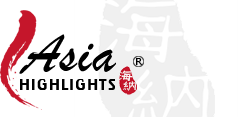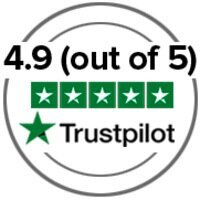Vietnam has a long history of being a war-torn country, with more years of war than peace over its 2000+ years.
What is called the 'Vietnam War', however, refers to a specific devastating war which took place between 1955 and 1975. The war is sometimes also called the 'Second Indochina War', or in Vietnam the 'War of Resistance Against America'.
The death toll from the war was tragically high. It's estimated that between 966,000 and 3.8 million Vietnamese soldiers and civilians died. This is in addition to 240,000–300,000 Cambodians, 20,000–62,000 Laotians, and 58,000 US service members who also died in the war.
The war is said to be the longest in American history, and received intensive media coverage. It was also one of the least understood wars in history.
Causes of the War
The Vietnam War was between communist North Vietnam and anti-communist South Vietnam, but there was also heavy international involvement.
North Vietnam was supported by the Soviet Union, China, and other communist allies, while South Vietnam was supported by the United States, South Korea, Australia, Thailand, and other allies. The US was especially heavily involved in this war.
South Vietnam also had a communist front called the Viet Cong, which fought using guerrilla warfare.
From the US side, the war was a fight against communism, fearing a 'domino effect' whereby more and more countries might fall into the hands of communism, eventually bringing the whole world down. From the North Vietnam perspective, people wanted to be free from colonial influence.
| Pro-communist | Anti-communist | |
|---|---|---|
| Leader | Ho Chi Minh | Ngo Dinh Diem, followed by Nguyen Van Thiu |
| Domestic | 1.People's Army of Vietnam (PAVN)/ North Vietnamese Army (NVA) 2.Viet Cong (South Vietnamese communist guerrilla force) |
1.Army of the Republic of Vietnam (ARVN) |
| International | 1.Soviet Union 2.China |
1.USA 2.South Korea 3.Australia 4.Thailand |
Discover real reviews of Highlights Travel Family's best-rated service across trusted platforms.

 
|
Vietnam & UAE FANTASTIC tour! Thank you Albee Ning!
Albee was INCREDIBLE. She arranged a 9-day private tour of both North and South Vietnam. No stone was left unturned: a private cruise up the Mekong; excellent hotel reservations; personal, caring tour guides; More
Consumer, Jun 2020
|
We traveled with Asia Highlights…
My husband and I had an absolutely wonderful 5 1/2 week trip that was organized by the exceptional Ruby Zhao. We have traveled a lot and Ruby is the VERY BEST AGENT we have ever had! More
Lurinda Smith Barton Barnwell, Mar 2020
|
We were.very satisfied with Asia…Four Great Weeks in China and Viet Nam
Asia Highlights was very efficient at advising us on what to see and the best routes to take, but they were also very flexible in integrating our own ideas in regard of travel destinations and accommodations. More
Eva and Jim, Oct 2019
|
US Involvement
The Vietnam War (1955–1975) spanned the rules of five American presidents.
Dwight D. Eisenhower (1953–1961)
Eisenhower was the first American President to get involved in the war. He believed the spread of communism was a threat to the USA and hence supported Ngo Dinh Diem, who was the anti-communist leader of South Vietnam, and sent military advisors to Vietnam to help build up Diem's army.
Diem was unpopular amongst many as he was a devout Catholic leading a majority Buddhist population. He was known to give preferential treatment to Catholics and discriminate against Buddhists.
John F. Kennedy (1961–1963)
Following Eisenhower, Kennedy was also a believer in the domino effect, and that communism needed to be contained. Kennedy continued Eisenhower's policy of supporting Diem.
In 1962, Diem implemented a 'Strategic Hamlet Program' with US support. In this program, countryside peasants were relocated to limit communist influence amongst the rural population.
Failure of the program contributed to general disillusionment with Diem. He had already been perceived as unfair and corrupt. Discontented with Diem, people started to turn to the Viet Cong, the southern communist army. Kennedy sent more US troops in response.
In November 1963, Diem was assassinated in a coup by Vietnamese generals. Subsequently, Thieu replaced Diem. Just three weeks later, Kennedy himself was assassinated.
Lyndon B. Johnson (1963–1969)
During his campaign for the presidency, Johnson pledged not to send American troops to Vietnam, but this quickly changed after he was elected. At the beginning of Johnson's term, the Gulf of Tonkin incident happened, a confrontation between North Vietnam and the US in the waters of Gulf of Tonkin.
The incident was falsely reported to the US public as a show of communist aggression. The result of this was the Gulf of Tonkin Resolution, which gave Johnson a legal justification for deploying US forces and the commencement of warfare against North Vietnam. Conflict escalated rapidly.
Operation Rolling Thunder lasted for three years from 1965 to 1968. This was a sustained and gradual aerial bombardment against North Vietnam. Johnson continuously increased the number of US troops deployed to Vietnam until by 1968, there were more than 500,000 US troops there.
Despite many US casualties and protests by the US public, Johnson refused to bring the troops home, saying, "I'm not going down in history as the first American President who lost a war."
North Vietnam launched the Tet Offensive in 1968, a series of fierce coordinated attacks in more than 100 cities. Casualties were many. Even though the US and South Vietnam managed to claw back control, the coverage of the attack dismayed the US public.
Richard Nixon (1969–1974)
Nixon started his presidency in 1969 with the promise of bringing 'peace with honor'. He planned "Vietnamization", aiming to gradually withdraw US troops and letting South Vietnam fight the fight themselves.
As part of the plan, however, he attempted to destroy North Vietnam's supply route through the Ho Chi Minh Trail to South Vietnam from Cambodia and Laos. The plan failed miserably, and caused instability in Cambodia, which tragically gave way to the brutal regime of Khmer Rouge.
Direct American involvement in Vietnam finally ended in 1973 with the signing of The Paris Peace Accords. Nixon resigned the year after, due to a domestic political scandal.
Gerald R. Ford (1974–1977)
Military aid to South Vietnam was significantly cut during Ford's presidency, from $2.8 billion in 1973, to $700 million in 1974, to $300 million in 1975.
On 23rd April 1975, Ford declared the war ended "as far as America is concerned". On the 30th April 1975, Saigon (later renamed Ho Chi Minh City) was captured and South Vietnam fell to the communists.
Since the War
Even though the Vietnam War devastated the country, Vietnam has since rebuilt and recovered under the unified communist government.
Now, Vietnamese do not hold grudges against Americans or other former enemies. In fact, they warmly welcome foreign tourists regardless where they are from, and seem to have no trouble moving on from their bitter past.
However, there is a legacy of the war that is still felt today in Vietnam due to the use of chemicals during the war.
Agent Orange, a herbicide and defoliant chemical, was sprayed in large amounts by US military over Vietnam's agricultural land. The purpose was to eliminate forest cover for the North Vietnamese, as well as to kill crops that might be used to feed them.
Not only did this have damaging environmental effects, the chemical has also caused major health problems for individuals exposed to it. Most serious and lasting have been the birth defects due to damaged genes. Vietnam has a high rate of birth defects, which are attributed to the use of Agent Orange during the war.
Explore Asia with Asia Highlights
At Asia Highlights we offer tailor-made tours through Asia, where you can enjoy all highlights as well as amazing cultural experiences. To get started, send us an email.
Why Asia Highlights (10,000+ reviews & 98.8% 5-star rating)
- Save Your Time:
- Less research, more enjoyment!
- Real-time 1V1 expert planning
- Maximize Your Flexibility:
- Personal local guide and ride
- Explore at your own pace
- Celebrate Your Journeys:
- Specially-crafted family adventures
- Celebrate milestones with style!
Get Inspired with Some Popular Itineraries
At Asia Highlights, we create your kind of journey — your dates, your destinations, at your pace. You can have any trip tailor made for your travel.

